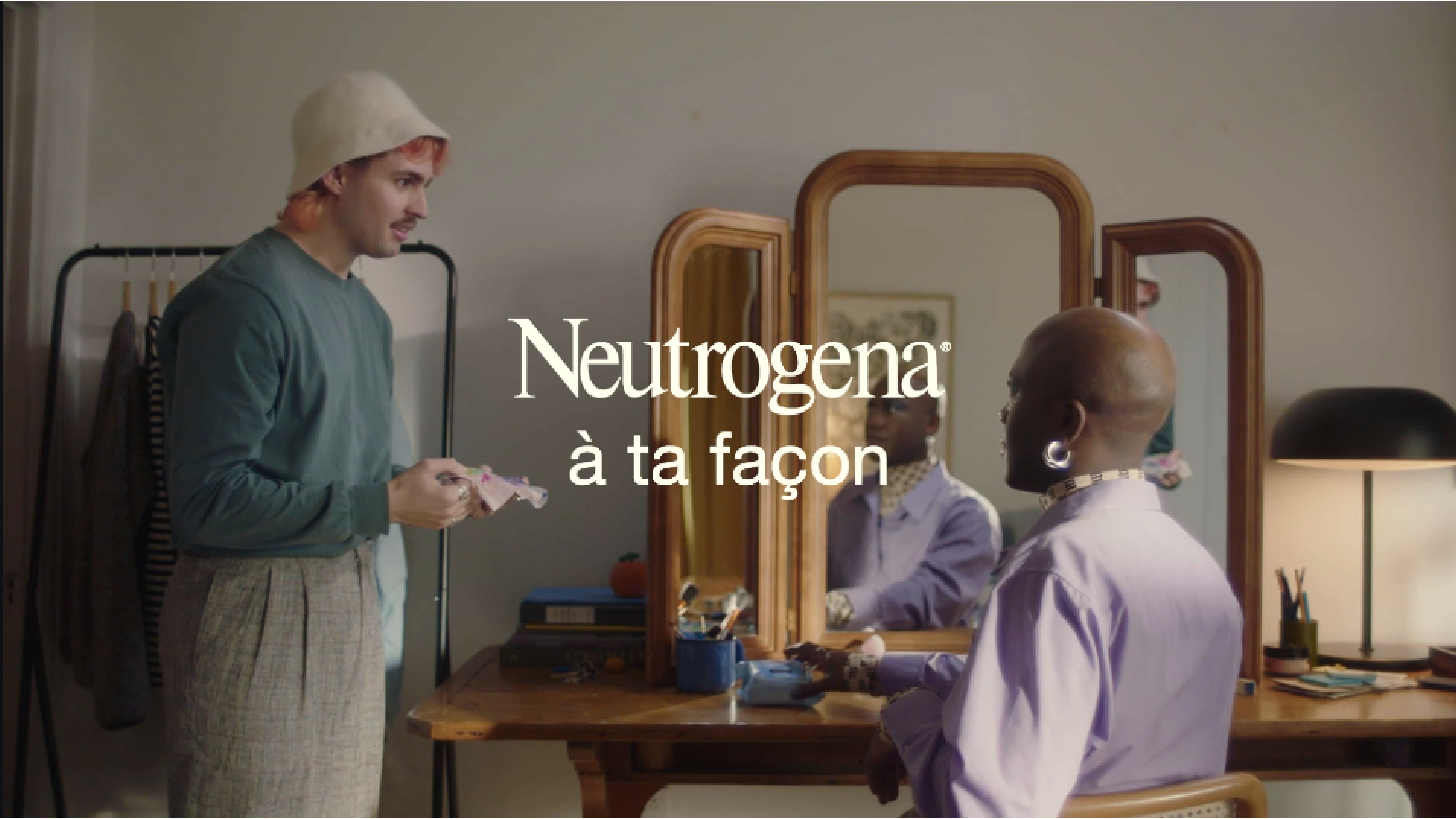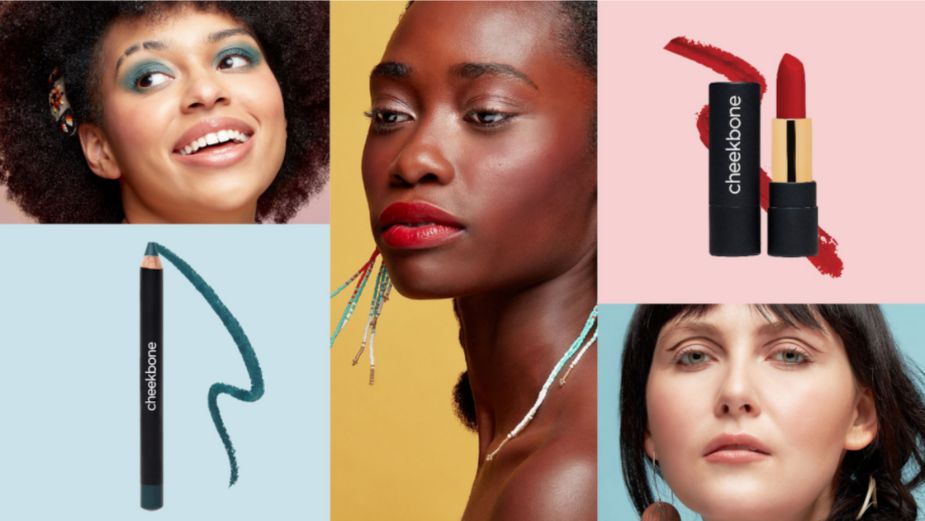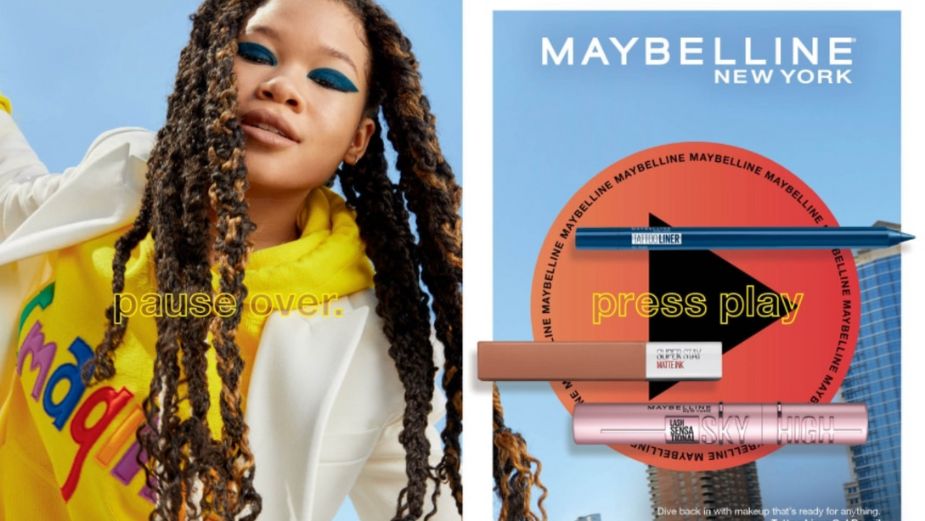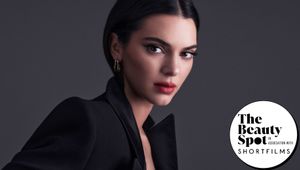
Redefining Aspiration: Beauty Brands are Moving Away from Perfection and Uniformity

Looking at the pages of any magazine or at digital campaigns today, it’s clear that the concept of beauty has shifted. The fashion and beauty worlds - champions of singular, unattainable aesthetic standards - have started to sing a different tune. Just 10 years ago, it was normal for a beauty brand to launch with a limited colour palette that catered to light skin tones only and not feature any models of colour in their campaigns. Now, brands that fail to cater to diverse demographics are rightfully criticised for a non-inclusive approach. And while far from truly representative, more campaigns are featuring a range of different people, with a focus on individuality and expression - not just looks.
In a market where brands can reach more consumers than ever before, it no longer makes sense to continue pushing an idealised idea of beauty that only a small fraction of the customers will identify with. Aspiration itself is undergoing a rebrand - self-contained beauty is no longer enough to entice and persuade. Instead, individualism and inclusivity are the lingua franca for brands to contend with.
So, are brands driving the trends or responding to them? And what challenges do brands in the beauty space face when it comes to advertising? LBB put these questions to the industry’s experts - Stephen Mead, director, and producer Holly Hartley at SHORTFILMS, a production company with a beauty specialism; Annika Ramchandani, associate creative director at Sid Lee, global creative agency; Laurie Donlon, CEO of McCann's gotham, beauty and fashion agency; and Priya Ahluwalia, director at Black Dog Films and creative director, designer and founder of clothing brand Ahluwalia.
LBB> How have you seen the aesthetics of beauty evolve in advertising?
Stephen> What’s now on screen has changed and what the consumer considers beautiful has changed. We’ve seen more clients sit on the fence because they’re no longer the ones leading the beauty conversation; consumers have said that they want to see themselves on screen and the brands are enacting it. That’s been the biggest shift and everyone’s embraced it now, getting over the hurdles that made it awkward at first. I think everyone’s in a happy place now where clients aren’t scratching their heads on how to work with the new demands and consumers are happy with the range of visuals on screen. It’s nice that beauty now covers a wider, more representative spectrum of people. For example, it’s no longer surprising to see someone from a minority background represented on screen; we see people of all ethnicities, ages, and sizes now which is a huge change.
Laurie> It's changed entirely over the span of my career. When I started my first agency job, the mindset with brands and consumers was that certain characteristics made someone beautiful - tall, thin, white, blonde, etc. Consumers wanted to attain a look that didn't come naturally to most. Ads at the time reflected that, and strived to convince consumers that products could transform you into that one ideal look. Everything was over-retouched to portray perfection.
Today the definition of beauty is much broader. At its core is the idea that individuality is beautiful. In that context advertising plays a very different role. Our job is to help people see how products can be used for self-expression. This means that ads need to show a variety of people - different types of hair, colour of skin, gender, size. It also means that ads need to show the versatility of the products so that people can envision the ways that they could use them creatively.
Annika> The aesthetic approach of beauty brands used to be one in the same. This has evolved, especially for young, emerging brands. The look and tone are far more diverse. We are starting to see a more realistic representation of what it means to be beautiful.
Priya> I have seen a real shift in the way beauty is advertised in the last few years, in both mainstream advertising and fashion. There is definitely a lot more creativity and a lot more focus on the fact that people are individuals and beauty products need to work for people across a spectrum of skin tones, shapes, sizes, backgrounds, and genders and I think beauty advertising is starting to reflect that. We also see a lot more adverts including people with different skin conditions, so I think it has become a lot more inclusive which is great.

Tess Daly for L'Oréal, by SHORTFILMS
LBB> Celebrity-fronted campaigns used to be something most brands wanted. Have you seen a shift away from this - why do you think it’s happening?
Priya> There is definitely still a valued place for celebrity advertising, the metrics show that celebrity fronted campaigns really work and pull in new audiences to want to get to know more about a brand. With beauty and with there being so many different products out there, it’s great for beauty campaigns to also include ‘real’ people that are using the products and showing how it tests over time rather than solely producing the highly polished, glossy campaigns - it’s all about transparency. It gives the consumer a real opportunity to see how the products are working, how the products are working on someone like themselves rather than being sceptical about a celebrity doing a campaign and wondering how much post production has been done, how many retouches have been made. I think the celebrity fronted campaigns are great for brand awareness and enticing people in but I definitely think that influencer strategies are key for conversion.
Stephen> The industry has moved away from featuring celebrities whose reputation hinges on their beauty and more towards multidimensional people. The celebrity campaign really works for some brands - L'Oréal, for example, bases whole product lines on celebrity endorsements. Actresses still have a lot of credibility, in a way that models may no longer do. We’ve turned away from the supermodel a little bit.
Holly> Influencers of course changed the game. People turned away from celebrities because they didn’t feel like they could believe in them and turned to influencers instead. Interestingly, this coincided with the market getting brands advertising themselves as natural, greener, things like that. Those brands wanted relatable models and spokespeople, and influencers fit the bill. Clients were lost for a little bit and guessing their way into how best to speak to an evolving market.
Laurie> It’s difficult to express a modern beauty brand through the face of a singular spokesperson or celebrity. It feels outdated and out of touch with where we are today. It takes a much wider range of talent. The power of celebrity in beauty today lies more in aligning a brand with a celebrity that is more than a “face” for the brand. It’s about what a celebrity can convey about your brand based on your shared values and point of view about beauty.
Annika> While celeb-status still holds its merit for their star power and reach, brands are now starting to portray more of the everyday person. A lot of celebrities are being replaced with influencers, specifically local influencers that create a sense of familiarity, relatability, and local brand love.

Stills from Priya Ahluwalia's AW23 collection
LBB> Consumers want to see beauty campaigns that are diverse and representative – how are brands/creatives approaching this? Are there any challenges?
Laurie> It's easy to create a campaign that showcases diverse talent because you simply include the demographic requirements in the casting brief. What is more difficult and endlessly more important is true representation – which requires knowledge of the people you are attempting to represent. Without that context you run the risk of cultural misappropriation. This is why it's so important for the talent behind the camera to be as diverse as the talent in front of it. In 2021 we started asking for our production partners on set to voluntarily share their demographics so that we can hold ourselves accountable for working with a diverse population of directors, photographers, make-up artists, hair stylists, etc.
Annika> Brands are starting to recognise that beauty isn’t defined by just one type of person. The biggest challenge is breaking the codes that once defined the face of beauty. The more brands open themselves up to the world of beauty across different genders, races and body types, the more consumers will see themselves as a true part of their brand story.
Priya> For my brand specifically, diversity and inclusion is ingrained in the brand. I like to reflect my dual Indian-Nigerian heritage in my work, so we are informed by that when we cast models in campaigns. In my recent show we had a cast of predominantly Black and Brown models of different sizes. We partnered with make-up artists Mata Marielle and Charlotte Tilbury who created the beauty looks and it was really about us amplifying those beautiful skin tones and working to make sure people felt represented. I think other brands may struggle when there isn’t diversity internally as it becomes a tick box exercise to do diverse campaigns when the inside of your business isn’t very inclusive. People are doing much better but there is still such a long way to go.
It happened a few years ago but Rihanna really did spearhead the beauty industry when she introduced 40 shades of foundation. Since then we have seen a lot of progress but unfortunately we do still see some launches that aren’t so inclusive. The other challenge and something that would be great to see more of is brands not only including different skins tones but including different genders into their campaigns as I dont think make-up is gendered and people all across the spectrum should be able to wear it, enjoy it and feel represented by it.
LBB> And how do you ensure that ‘real people’ or non-professional talent deliver as talent in front of the camera?
Stephen> You have to find the beauty and the soul of the person in front of the lens. You want to show people as they are to challenge the idea of two-dimensional beauty. It’s more about the person in question, their character, not just their face. There’s a shift away from focusing on products and towards authentically, capturing the spirit of the campaign star.
gotham for Maybelline
LBB> How can brands balance ‘real’ beauty with aspiration?
Laurie> This all starts and ends with how the brand defines ‘beauty’. For a brand like Maybelline, which is the champion of beauty democratisation, there is no distinction between ‘real’ beauty and aspiration. What is aspirational is creating a brand that allows all people to see the beauty in themselves and to see themselves represented in a meaningful way. That’s our mission at gotham – to shift perceptions through the work we create. Humanity is beautiful… real and aspirational.
Stephen> Aspiration hasn’t gone away but it has evolved and that’s a tricky road for brands to navigate. We know that purchasing decisions are still influenced by aspirational thinking with people wanting to achieve the results that brands are promising them. Brands are trying to balance appearing honest while still providing a dose of aspiration.
Priya> I personally think it’s about creating aspirational and inspirational campaigns, they could be films or still campaigns, pieces of work that make the brands desirable and enticing. That also needs to be coupled with raw or more user-generated content, it’s about balancing the mix. At my brand we use a lot of UGC and we repost a lot of content from our community interacting with the brand and this is often the same with successful beauty. It’s great to have innovative campaigns coupled with content centred on how people are using the products in real life.
LBB> Are brands creating aesthetic trends or are they responding to trends?
Laurie> It's always a mix of both. Brands put a lot of resources towards trying to predict trends, so that they can create products that will meet the needs generated by them. Of course there will always be some that weren't predicted, and brands can learn a lot from them. It's always interesting to see how people use products in ways that no one expected.
It's also critical for brands to think about how to drive trends through storytelling, rather than R&D. The ability to engage with consumers in a way that is genuine, and isn't necessarily tied to a specific product. In 2021, as the world was beginning to open up again, gotham created a new campaign for Maybelline that urged consumers to resume their activities and press play on life again. It didn't support a specific product, but instead was a celebration of life in general. Called ‘PRESS PLAY’, the campaign was the most successful online and offline brand experience campaign Maybelline had ever done.
Stephen> Brands are responding more. There are so many diverse threads that I feel brands may be nervous to strike out and head off in one direction because they could fall short on other demands like ‘green’ issues and sustainability. I presume new brands that appear with a clean slate have an easier task as they don’t have a tarnished record of production, seen from that wonderful perspective of hindsight.

Sid Lee for Neutrogena
Annika> One of the biggest challenges for beauty brands is trying to steer away from the portrayal of ‘perfection’ when in reality beauty lies in imperfection.
Priya> I think it’s different for different brands. I know speaking from a fashion point of view I always want to create looks that are really intertwined with the creative vision for the collection. I don’t necessarily look at trends that are happening; for example in my latest show everything was inspired by the musicians that have inspired me throughout my life, for example Sade and Lauryn Hill. However, I definitely think that some beauty brands lean into trends and those trends often led by gen z as well as experimentation by creators on TikTok.

Sid Lee for Cheekbone Beauty, an Indigenous-owned brand
LBB> What are the main challenges for a beauty brand right now in terms of advertising – are any of the challenges specific to beauty?
Laurie> I think all brands, not just beauty, are grappling with the challenge of capturing the attention, imagination and loyalty of people with shorter attention spans, using shorter formats amid an unlimited amount of competition. Finding the right mix of strong product stories, powerful brand purpose and cultural relevance is key to building memorable brands.
Priya> I personally feel a big challenge to beauty, especially due to increased amounts of younger consumers in the market, is that people really want to see and feel authenticity from brands, especially when it comes to beauty. People want sustainable products and they also want campaigns that are reflective of diverse audiences, and I think it can be a struggle for older and bigger beauty brands that are less agile or have a very long history of a particular aesthetic. How do they lean into that desire from people to shop with inclusive and sustainable brands but also have those luxury elements without feeling inauthentic? I also think that there are a lot of beauty brands as well as a lot of people doing beauty as part of their business, which means there is an increasingly saturated market, so how do they lean into the key pillars whilst also having a unique vision and point of view? That is quite a big challenge.
LBB> Where is the beauty space heading in the next year or two?
Holly> Society is changing and people want realism, they want to see themselves represented in campaigns. The grunge aesthetic is back. Beauty and lifestyle are very intertwined too. The idea of great skin is sold through a certain lifestyle, not just products.
Stephen> From the diverse routes that beauty has taken over the past few years there has to be a new route emerging. One that is neither artificial and totally unrealistic in one’s self-image or over-honest and almost ashamed to be attractive. An appreciation of beauty that doesn’t fall into stereotypes.
Laurie> I think we’ll continue to see beauty and self-care becoming more and more intertwined, along with more focus on communities/tribes. This is also reflected in the shifting dynamic in influencer advocacy, with consumers trusting more niche influencers, not just the broader-reaching category-specific influencers.
Priya> I hope that beauty is heading to an even more inclusive space, becoming more representative and more open. Beauty communities have got such power as so many people in the world are so passionate about being creative in the way they look. So I hope it starts to be more open and also it would be great to see more sustainable product offerings in the market.














